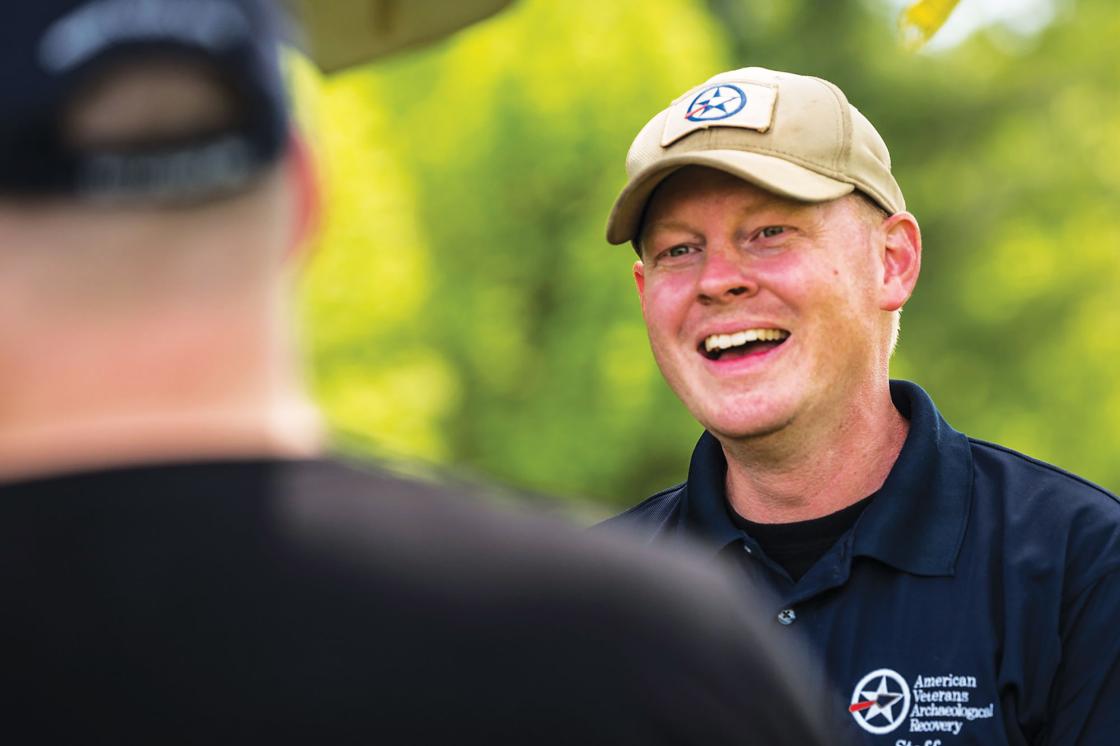Dr. Steven Humphreys

Stephen Humphreys took a circuitous path to his current position as a tutor in archaeology at the United Kingdom’s University of Durham, where he completed his doctorate earlier this year, and CEO of American Veteran Archaeological Relief (AVAR). From his youth in Texas, he detoured through a deployment to the Middle East as an officer in the U.S. Air Force and earned a master’s degree in theology before finding his passion in archaeology and his life’s calling in using that science to help disabled veterans find purpose after leaving the military.
He joined the Air Force as a 22-year-old lieutenant, fresh from undergraduate studies in history at the University of North Texas. During his six years in uniform, Humphreys served as an aircraft maintenance officer, leading teams of up to 70 airmen and, when deployed to Iraq during Operation Iraqi Freedom and Operation Enduring Freedom, bearing direct responsiblity for assets valued at up to $2.6 billion. Through his service, he rose to the rank of captain and became an assistant professor of aerospace studies at Texas A&M University, teaching courses on the evolution of American air and space power.
Despite these successes, Humphreys recognized, “I really wasn’t that interested in jets — I was interested in taking care of my folks. So after a few years, I separated from the Air Force so I could become a chaplain. Then I would go back to the military in that capacity and really focus on taking care of those troops, the thing I was most passionate about.”
Soon, however, fate intervened. While Humphreys was enrolled at Southwestern Baptist Theological Seminary’s Divinity Program — a master’s in that discipline being a military prerequisite for a chaplaincy — he had the opportunity to volunteer on an archaeological dig in Israel.
“As soon as I started digging, it changed my life. I immediately went back and changed all my coursework to pursue a master’s in archaeology.” With his research interest focused on the early Christian church and the development of the idea of charity, and some coursework already completed, he also completed a second master’s in theology.
The third major pivot point that bought Humphreys to found AVAR occurred in 2015, early in his doctoral program, when he was sought out to join a phase of an ongoing excavation at Vindolanda, a Roman fort along Hadrian’s Wall.
“The Brits are the ones who came up with the idea of putting disabled vets on digs; they started doing it [with Operation Nightingale™ and the Defense Archaeology Group] in 2011. And they found out there was an ex-U.S. military officer doing research right next to them in Durham and got in contact. So I went out with them and immediately thought, ‘Wow, this is something we’ve got to do. This would work as well, if not better, with American veterans.’”
Since founding AVAR the following year, Humphreys has seen how deeply AVAR’s mission — using archaeology as a tangible way to help veterans connect and foster confidence during their reintegration into civilian life — resonates with participants and supporters. Dig opportunities typically fill up months in advance, and partnerships with outstanding entities take shape regularly. A 2018 dig at a Shaker settlement in New York State in partnership with crowdfunding organization DigVentures received grant funding from National Geographic. During the 2019 season, in addition to a joint effort with the Trust and the National Park Service at Saratoga, AVAR undertook the excavation of a 1944 American B-24 Liberator crash site alongside the University of York and a similar British veterans group, Breaking Ground Heritage. The mission — collect information that could lead to the identification and recovery of U.S. service members still unaccounted for — was pursued in official partnership with the U.S. Department of Defense’s POW/MIA Accounting Office.
Through it all, Humphreys has tried to retain the spark that drew him to archaeology in the first place: “That sense of discovery really stuck with me — the idea that every flip of the trowel could turn up something. It’s something that I’ve carried over into AVAR, because I think that’s something people want out of archaeology: the idea that there’s something down there, but we won’t know what it is until we find it.”